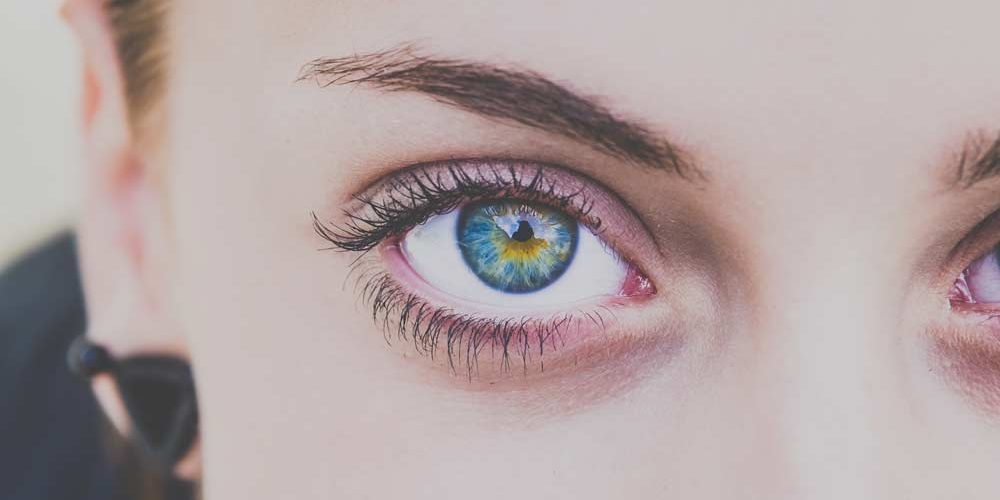Keratoconus, often referred to as “KC,” is a non-inflammatory eye condition in which the typically round dome-shaped cornea progressively thins and weakens, causing the development of a cone-like bulge and optical irregularity of the cornea. This causes “static” in your vision and can result in significant visual impairment.

Symptoms
Typically, keratoconus first appears in individuals who are in their late teens or early twenties, and may progress for 10-20 years, and then slow or stabilize. Each eye may be affected differently. In the early stages of keratoconus, people might experience:
The cornea is responsible for focusing most of the light that comes into the eye. Therefore, abnormalities of the cornea, such as keratoconus, can have a major impact on how an individual sees the world, making simple tasks such as driving a car or reading a book very difficult.1
Keratoconus
You can find more information from the National Keratoconus Foundation at www.NKCF.org.
3. Beshwati IM, O’Donnell C, Radhakrishnan H Biomechanical properties of corneal tissue after ultraviolet-A-riboflavin crosslinking. J Cataract Refract Surg. 2013;39(3):451-62. Doi:10.1016/j.jcrs.2013.01.026.
Fuchs’ Dystrophy
Fuchs’ dystrophy is an eye disease that usually affects both eyes in which cells lining the inner surface of the cornea start to die off. It is more commonly seen in women than in men and vision problems usually occur around the age of 50, although, doctors may be able to see signs of the disease in affected persons at an earlier age.
Keratoconus
Keratoconus is a disease that creates thinning of the cornea. Normal pressure within the eye causes the cornea to have a round dome shape, like a ball. However, sometimes the tiny fibers of protein that help hold the cornea in place and keep it from bulging become weak, and the cornea bulges outward like a cone. This change in the cornea’s shape can have a dramatic impact on one’s vision. It normally affects both eyes, but usually progresses at different rates.
Cross-linking is a minimally invasive outpatient procedure that combines the use of UVA light and riboflavin eye drops to add stiffness to corneas, which have been weakened by disease or refractive surgery. Cross-linking, which has been performed in Europe since 2003, is considered the standard of care around the world for keratoconus and corneal ectasia following refractive surgery.2
1. National Keratoconus Foundation
2. Gomes, José A. P., Donald Tan, Christopher J. Rapuano, Michael W. Belin, Renato Ambrósio, José L. Guell, François Malecaze, Kohji Nishida, and Virender S. Sangwan. “Global Consensus on Keratoconus and Ectatic Diseases.” Cornea 34.4 (2015): 359-69. Web.
Corneal Cross-Linking3

Less Cross-Linking (Weaker) More Cross-Linking (Stronger)
Riboflavin
Riboflavin (vitamin B2) is important for body growth, red blood cell production and assists in releasing energy from carbohydrates. Its food sources include dairy products, eggs, green leafy vegetables, lean meats, legumes, and nuts. Breads and cereals are often fortified with riboflavin.
Under the conditions used for corneal collagen cross-linking, riboflavin 5’-phosphate, vitamin B2, and functions as a photoenhancer, which enables the cross-linking reaction to occur.
Ultra-Violet A (UVA)
UVA is one of the three types of invisible light rays given off by the sun (together with ultra-violet B and ultra-violet C) and is the weakest of the three.
A UV light source is applied to irradiate the cornea after it has been soaked in the photo enhancing riboflavin solution. This cross-linking process stiffens the cornea by increasing the number of molecular bonds, or cross-links, in the collagen.
3. Beshwati IM, O’Donnell C, Radhakrishnan H Biomechanical properties of corneal tissue after ultraviolet-A-riboflavin crosslinking. J Cataract Refract Surg. 2013;39(3):451-62. Doi:10.1016/j.jcrs.2013.01.026.
At Colorado Eye Institute, we serve patients utilizing state-of-the-art technology in a state-of-the-art facility. One of the great benefits you’ll experience at Colorado Eye Institute is every stop from beginning to end being done in-house. We won’t send you from location to location seeing different doctors and staff; you will see the same familiar faces throughout your entire experience. You will also receive personalized service from us as we strive to understand every patient’s concerns and goals. We make sure you are comfortable and provide exceptional care along the way. Our patients are very dear to us and part of our Colorado Eye Institute family!
James Lee, M.D., specializes in customized cataract surgery, LASIK, keratoconus, and corneal and external diseases of the eyes. He also performs the most advanced types of corneal transplants including DSEK, DMEK, and laser assisted procedures. He also practices comprehensive ophthalmology.